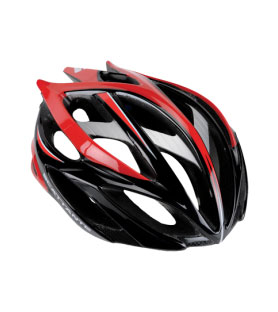
- Afrikaans
- Albanian
- Amharic
- Arabic
- Armenian
- Azerbaijani
- Basque
- Belarusian
- Bengali
- Bosnian
- Bulgarian
- Catalan
- Cebuano
- Corsican
- Croatian
- Czech
- Danish
- Dutch
- English
- Esperanto
- Estonian
- Finnish
- French
- Frisian
- Galician
- Georgian
- German
- Greek
- Gujarati
- Haitian Creole
- hausa
- hawaiian
- Hebrew
- Hindi
- Miao
- Hungarian
- Icelandic
- igbo
- Indonesian
- irish
- Italian
- Japanese
- Javanese
- Kannada
- kazakh
- Khmer
- Rwandese
- Korean
- Kurdish
- Kyrgyz
- Lao
- Latin
- Latvian
- Lithuanian
- Luxembourgish
- Macedonian
- Malgashi
- Malay
- Malayalam
- Maltese
- Maori
- Marathi
- Mongolian
- Myanmar
- Nepali
- Norwegian
- Norwegian
- Occitan
- Pashto
- Persian
- Polish
- Portuguese
- Punjabi
- Romanian
- Russian
- Samoan
- Scottish Gaelic
- Serbian
- Sesotho
- Shona
- Sindhi
- Sinhala
- Slovak
- Slovenian
- Somali
- Spanish
- Sundanese
- Swahili
- Swedish
- Tagalog
- Tajik
- Tamil
- Tatar
- Telugu
- Thai
- Turkish
- Turkmen
- Ukrainian
- Urdu
- Uighur
- Uzbek
- Vietnamese
- Welsh
- Bantu
- Yiddish
- Yoruba
- Zulu
Feb . 16, 2025 14:28 Back to list
mountain bike bikes
Mountain biking isn’t just a sport; it’s a passion that blends adventure with skill. Within this exhilarating world, choosing the right mountain bike can be both an art and a science. Entering the universe of mountain bikes, let's explore what makes a great bike, the cutting-edge features transforming rides, and why these elements are crucial for both enthusiasts and professionals.
The brakes on a mountain bike are your safety line. Hydraulic disc brakes are the standard for serious riders, offering superior stopping power and modulation compared to mechanical disc brakes. This technological advancement is crucial when descending steep trails, where control is paramount. Authoritativeness in mountain biking also extends into the realm of customizable components. Handlebars, saddles, and pedals can be tailored to fit individual preferences, enhancing comfort and efficiency. A broader handlebar can offer better stability at high speeds, whereas a comfortable saddle with ergonomic design can make long rides more enjoyable. Moreover, trustworthiness in the mountain biking world is often built on brand reputation. Giants like Trek, Giant, and Specialized have cemented their place due to their consistent quality and innovation. These companies invest heavily in research and development, pushing the envelope with each new model, and they offer warranties and service options that give buyers peace of mind. In conclusion, selecting and maintaining a mountain bike is a journey that combines personal preference with informed decision-making. The blend of technological innovation and rider requirements defines the perfect bike, whether you are navigating a rugged mountain pass or hitting the trails for a leisurely ride. Understanding the subtle nuances that set these bikes apart fosters a deeper connection to the sport and ensures each ride is both safe and exhilarating. As mountain biking continues to evolve, staying informed and making choices based on evidence and expertise will keep you at the forefront of this electrifying journey.


The brakes on a mountain bike are your safety line. Hydraulic disc brakes are the standard for serious riders, offering superior stopping power and modulation compared to mechanical disc brakes. This technological advancement is crucial when descending steep trails, where control is paramount. Authoritativeness in mountain biking also extends into the realm of customizable components. Handlebars, saddles, and pedals can be tailored to fit individual preferences, enhancing comfort and efficiency. A broader handlebar can offer better stability at high speeds, whereas a comfortable saddle with ergonomic design can make long rides more enjoyable. Moreover, trustworthiness in the mountain biking world is often built on brand reputation. Giants like Trek, Giant, and Specialized have cemented their place due to their consistent quality and innovation. These companies invest heavily in research and development, pushing the envelope with each new model, and they offer warranties and service options that give buyers peace of mind. In conclusion, selecting and maintaining a mountain bike is a journey that combines personal preference with informed decision-making. The blend of technological innovation and rider requirements defines the perfect bike, whether you are navigating a rugged mountain pass or hitting the trails for a leisurely ride. Understanding the subtle nuances that set these bikes apart fosters a deeper connection to the sport and ensures each ride is both safe and exhilarating. As mountain biking continues to evolve, staying informed and making choices based on evidence and expertise will keep you at the forefront of this electrifying journey.
Next:
Latest news
-
The Ultimate Kids' Four-Wheeler Experience
NewsJul.09,2025
-
The Ultimate Guide to Mountain Bikes: Gear Up for Your Ride
NewsJul.09,2025
-
The New Age of Cycling: Electric Bikes for Every Rider
NewsJul.09,2025
-
The Best Kids Bicycles: Ride in Style and Safety
NewsJul.09,2025
-
The Best 3-Wheel Scooters for Kids: Fun, Safety, and Adventure
NewsJul.09,2025
-
Revolutionize Your Ride: Affordable Electric Bikes
NewsJul.09,2025
-
Finding the Perfect Mountain Bike for Every Rider
NewsJul.09,2025



